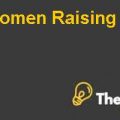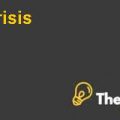Introduction
The demand in the global fragrances is expected to rise due to the rise in spending in developing countries. Industry experts have predicted healthy sales and a growing fragrance manufacturing industry within the Middle East region. The UAE and other countries in the Gulf Cooperation have a strong and unique culture that favors’ the appreciation of perfumery.
Problem Statement
The market of Middle East region has become very competitive as the international competitors are firmly establishing themselves with strategies such as the usage of social media and the distributing perfumes at airports. On the other hand, the regional perfumeries are not exploiting these strategies; therefore, this may take the competitive advantage from them in the near future.
There is a need that the regional competitors try to adapt strategies that can assist them to counter the effects of the rising international competition.
External Environment
The external environment is assessed through PEST analysis. It allows the company to examine political, economic, social and technological factors affecting the business to make informed decisions.
Political
There are many international and local regulations that apply to perfume manufacturers to protect consumers and the environment. Regulatory environment may require a company to change certain perfumes which may result in increased costs. These changes may also delay product launches and lead to lower sales. For instance, many perfume manufacturers feared that the European Union may introduce laws that may ban some ingredients to protect consumers. These changes would require companies to change the formula by which perfumes are developed.
In the UAE, perfumers are required to meet the standards set by the Emirates Authority for Standardization and Metrology (EASM). In March 2012, Fragrance Foundation Arabia and key industry players devised technical regulations based on international standards for the UAE market. These standards are focused on product safety and the elimination of the risk to consumers and the environment.
Economical
In the United States of America and Europe, there is high unemployment. The availability of credit has been reduced leading to reduced consumer spending. All of these factors have affected the sales of perfumes in these countries. Moreover, disruptions in the financial markets, fluctuations in the foreign currency, exchange rates as well as stoppages in travel and political conditions also have material effect on demand.
During the economic recession of 2008, the personal car industry in GCC experienced one of the highest growth rates in the world. The UAE is rated one of the most popular markets for expansion amongst international retailers. As other parts of the Middle East were affected by the Arab Spring Movement, however, the UAE was not affected. This news led to substantial increases in tourist visits and average retail sales at the country’s major malls. Most of the customers were expatriates which represented 90% of the residents. The major portion of the UAE GDP comes from Oil (25%) while 8% come from tourism.
United Arab Emirates has the highest GDP per capita after Kuwait. The GDP of UAE is $51137 per capital which is extremely high. Saudi Arabia is the Gulf’s largest market for fragrances and accounted for 827.5 million in 2011 and UAE stands at the second place with $205.8 million. Sales are expected to grow by 14.4% in Saudi Arabia and 16.5% in the UAE. UAE also has one of the lowest unemployment rates. Growth in the UAE’s travel and tourism industry was a significant factor in stimulating long-term consumer confidence and growth.
Arabic Perfumes and the Global Fragrance Market Case Solutions
Social
Travelers and tourists represent the growing market segment in the fragrance industry. It is estimated that amongst the 1 billion international travelers, 30-40% show up at retail stores. Airports are becoming the stealth shopping malls of the 21st century. The demands for luxuries have been rising in the Middle East region. Every year million travelers go to Saudi Arabia each year to perform Hajj.
The market for fragrances was segmented amongst Women, Men and Unisex. In 2010, the global sales to women fragrances, men fragrances and unisex fragrances were $13.58 billion, $ 6.82 billion and $0.83 billion respectively. The market is also distributed amongst premium and mass fragrances. The total sales of premium fragrances are higher than the sales of mass fragrances. The sales of premium fragrances are 21.23 billion and the sales of mass fragrance amounts to 18.49 billion................
This is just a sample partial case solution. Please place the order on the website to order your own originally done case solution.













